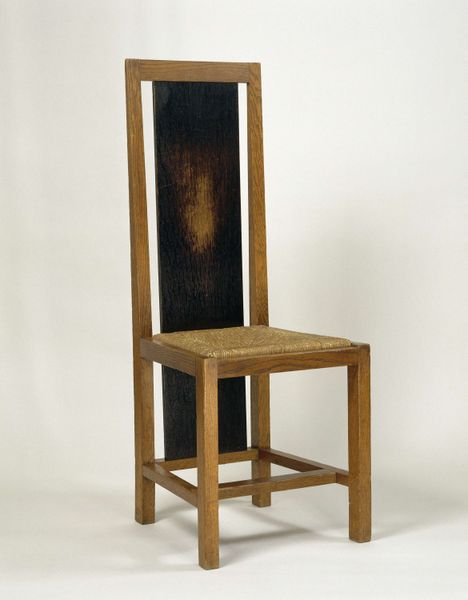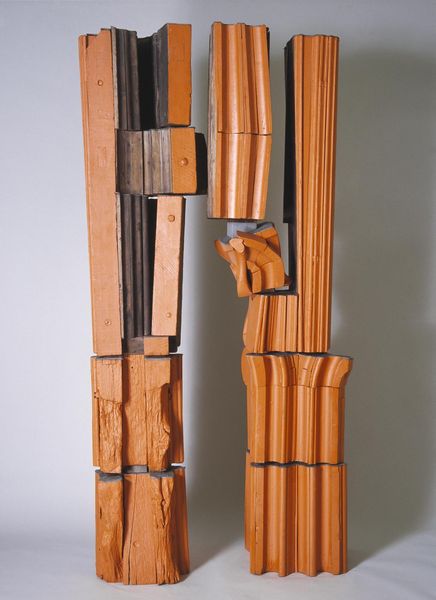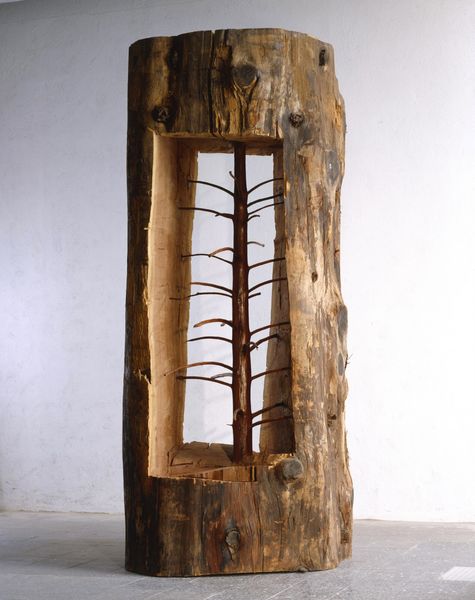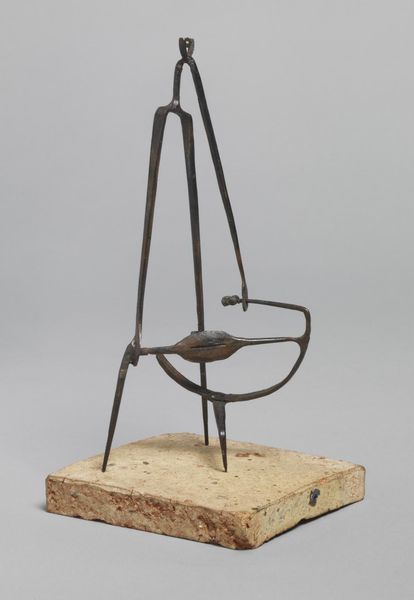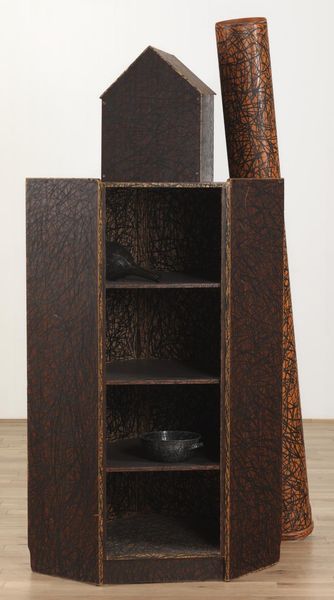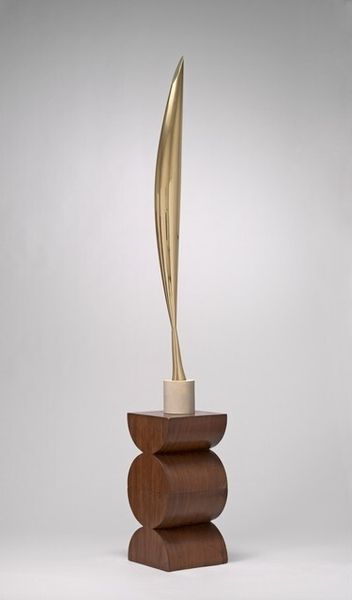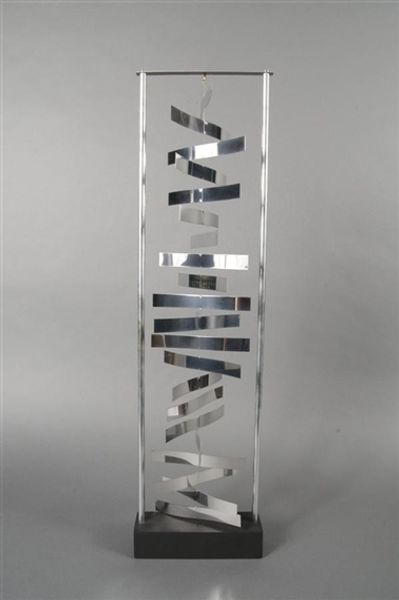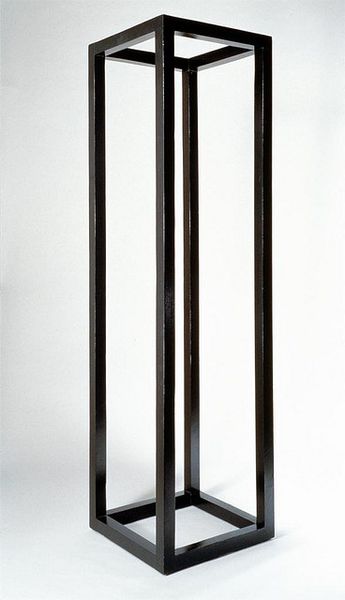
sculpture, wood
#
table
#
natural stone pattern
#
form
#
sculpture
#
abstraction
#
line
#
wood
Copyright: Kishio Suga,Fair Use
Editor: Right now, we're looking at "Counterparts," a sculpture from 2003 by Kishio Suga, crafted from wood. The first word that springs to mind is playful. It's as if a child has re-imagined a table. The supports have been turned into these gorgeous, almost cartoon-like squiggles. How do you read it? Curator: Playful, yes, absolutely! I feel a lightness, a rebellion against the mundane. It reminds me of standing stones. A Stonehenge gone delightfully wrong, maybe? But more profoundly, Suga's work delves into the essence of 'mono-ha,' emphasizing the relationships between natural and man-made materials. The rough, untreated wood clashes deliciously with those intensely black, almost dancing supports. Does that contrast resonate with you? Editor: It does, that push and pull. I’m used to sculpture that's smoothed, refined... this feels deliberately raw. Curator: Precisely! Suga allows the wood to speak, almost untouched. Think about the negative space too, the air vibrating between the elements. It isn't just about the solid objects; it's the *relationships* they conjure. I'd ask myself, "What exactly *are* counterparts, and where can you observe these within Suga's construction"? Editor: Hmm… Is it about how the natural form of wood opposes the artificial shaping, but also, together they become something new? Curator: Yes, it is! It's like he is asking us to really *see* how things affect each other, and our experience of reality. Editor: So it's less about what it *is*, and more about how the pieces communicate? I’ll need to sit with that. Thanks, that's a mind-bender! Curator: Art should be. And sometimes, the simplest forms reveal the most complex ideas, right?
Comments
No comments
Be the first to comment and join the conversation on the ultimate creative platform.
